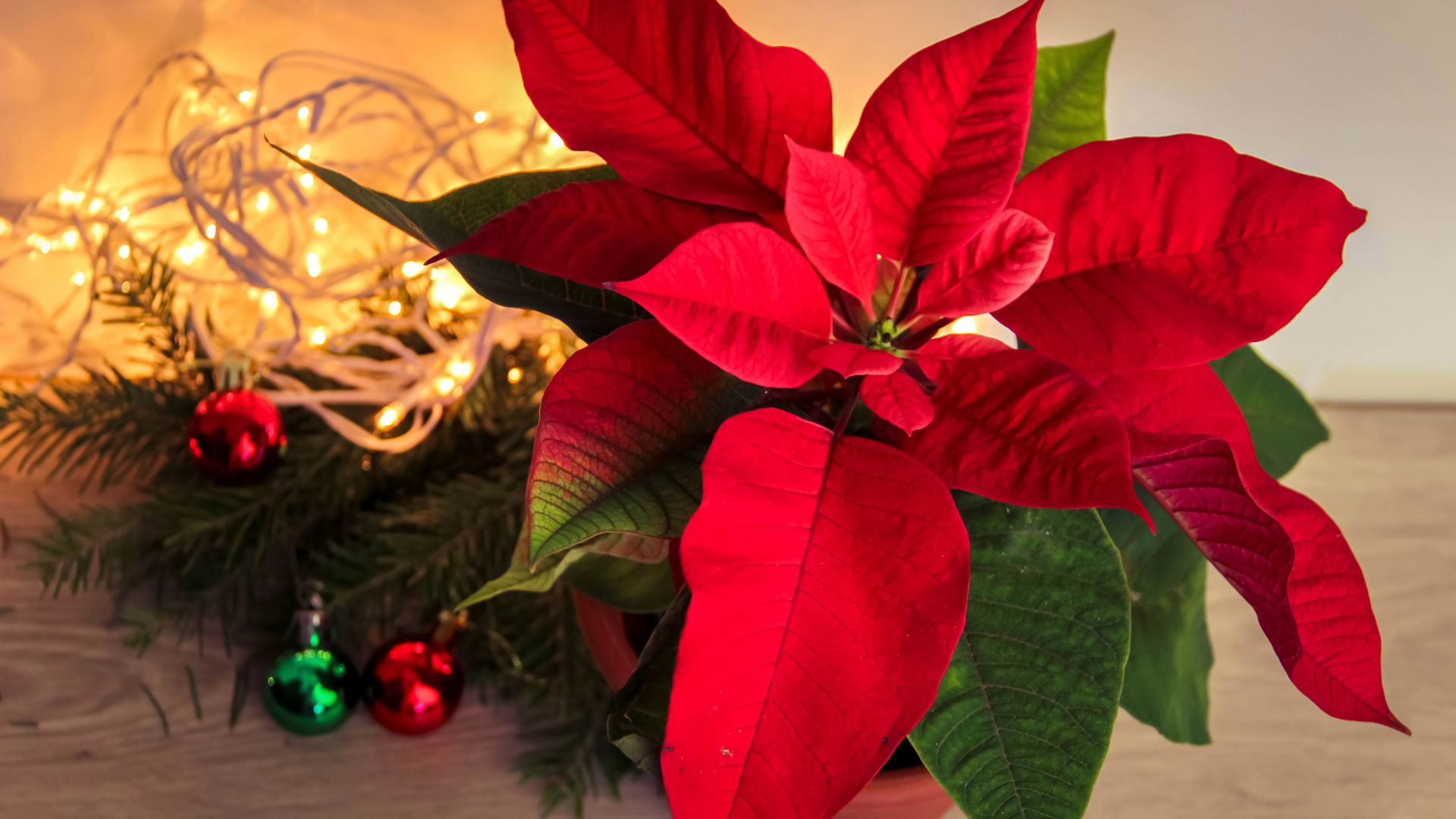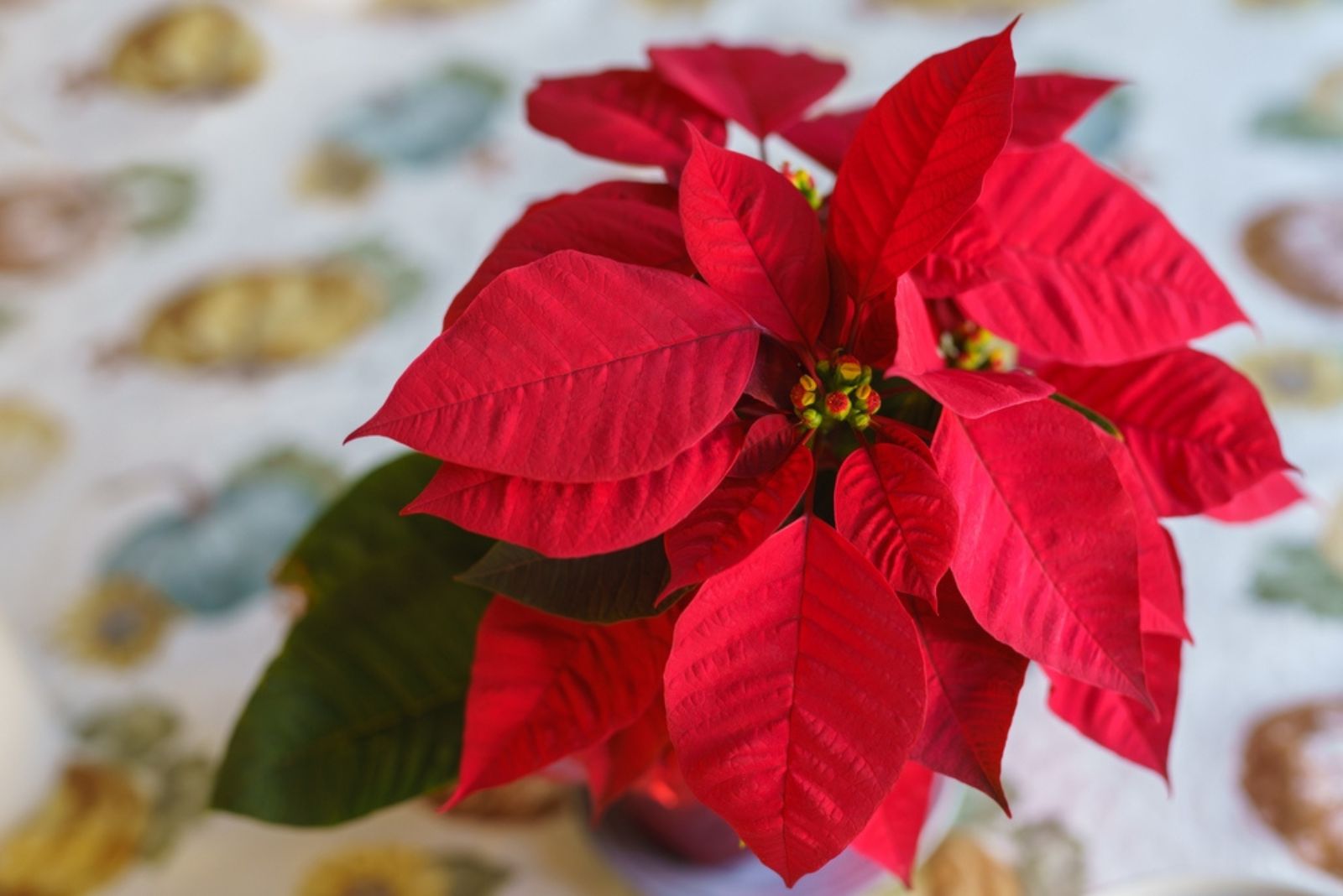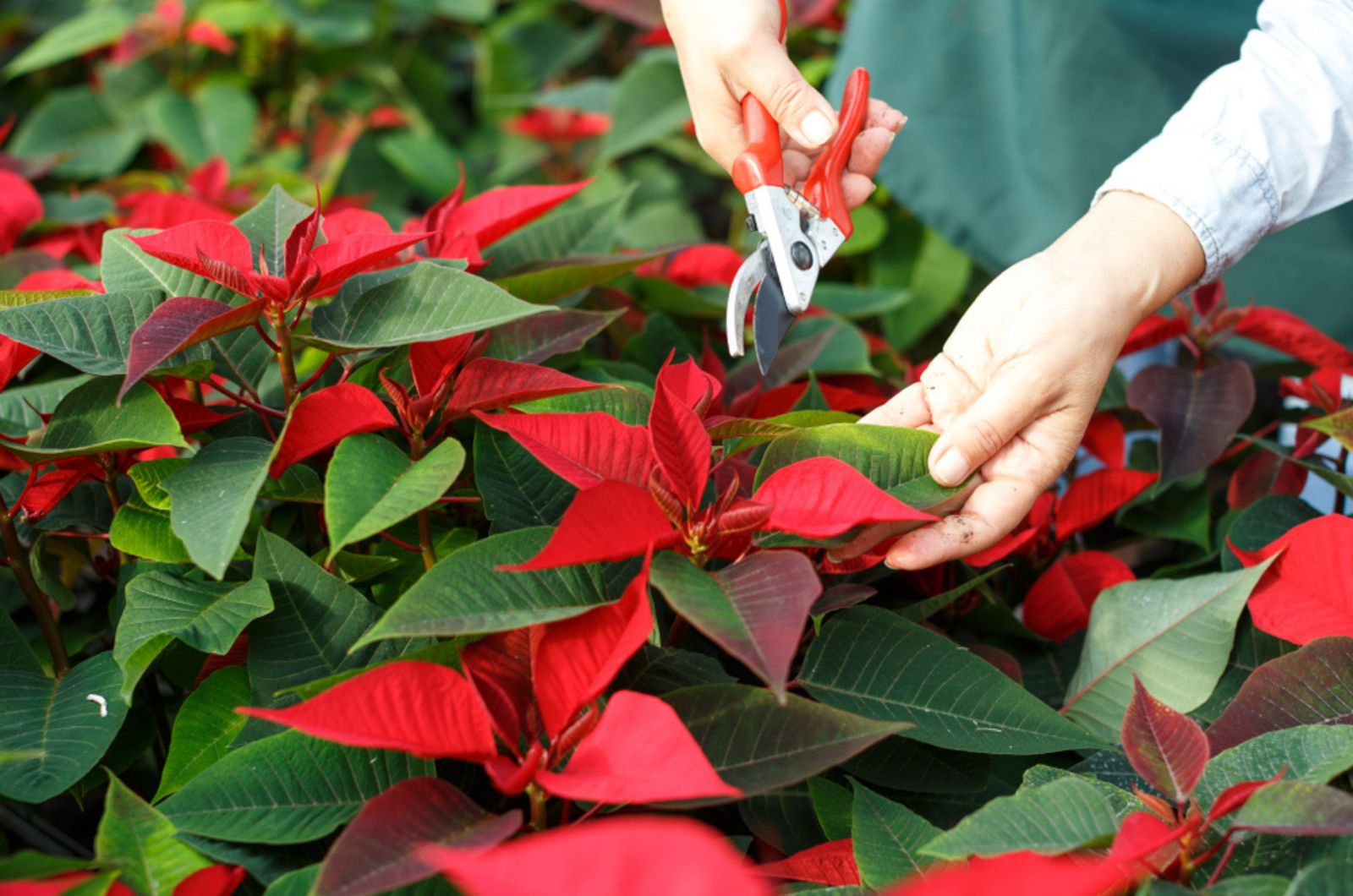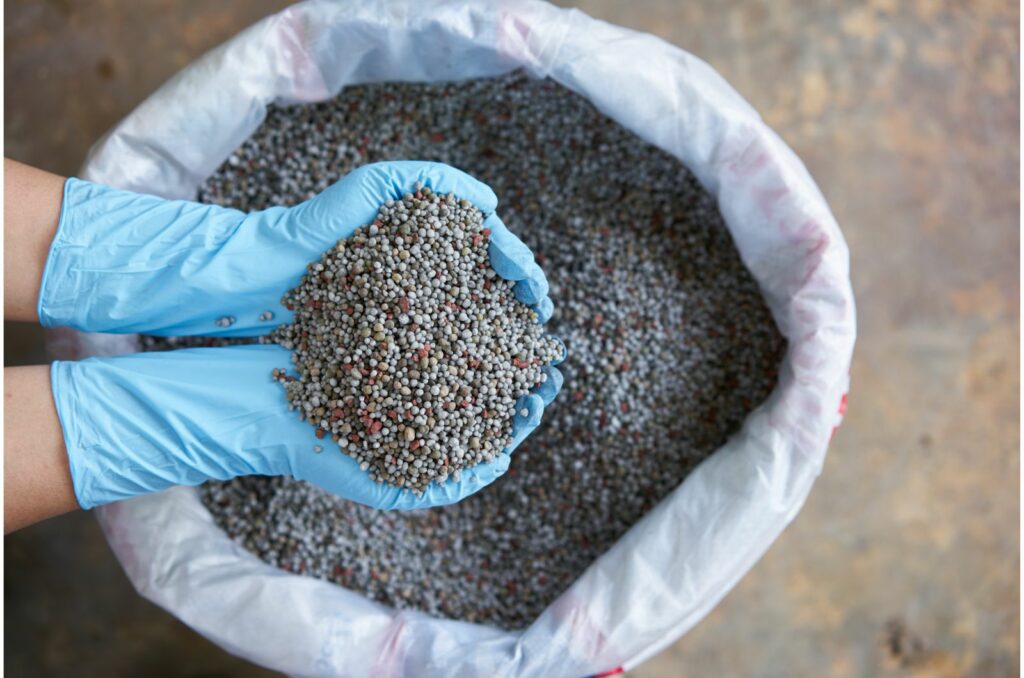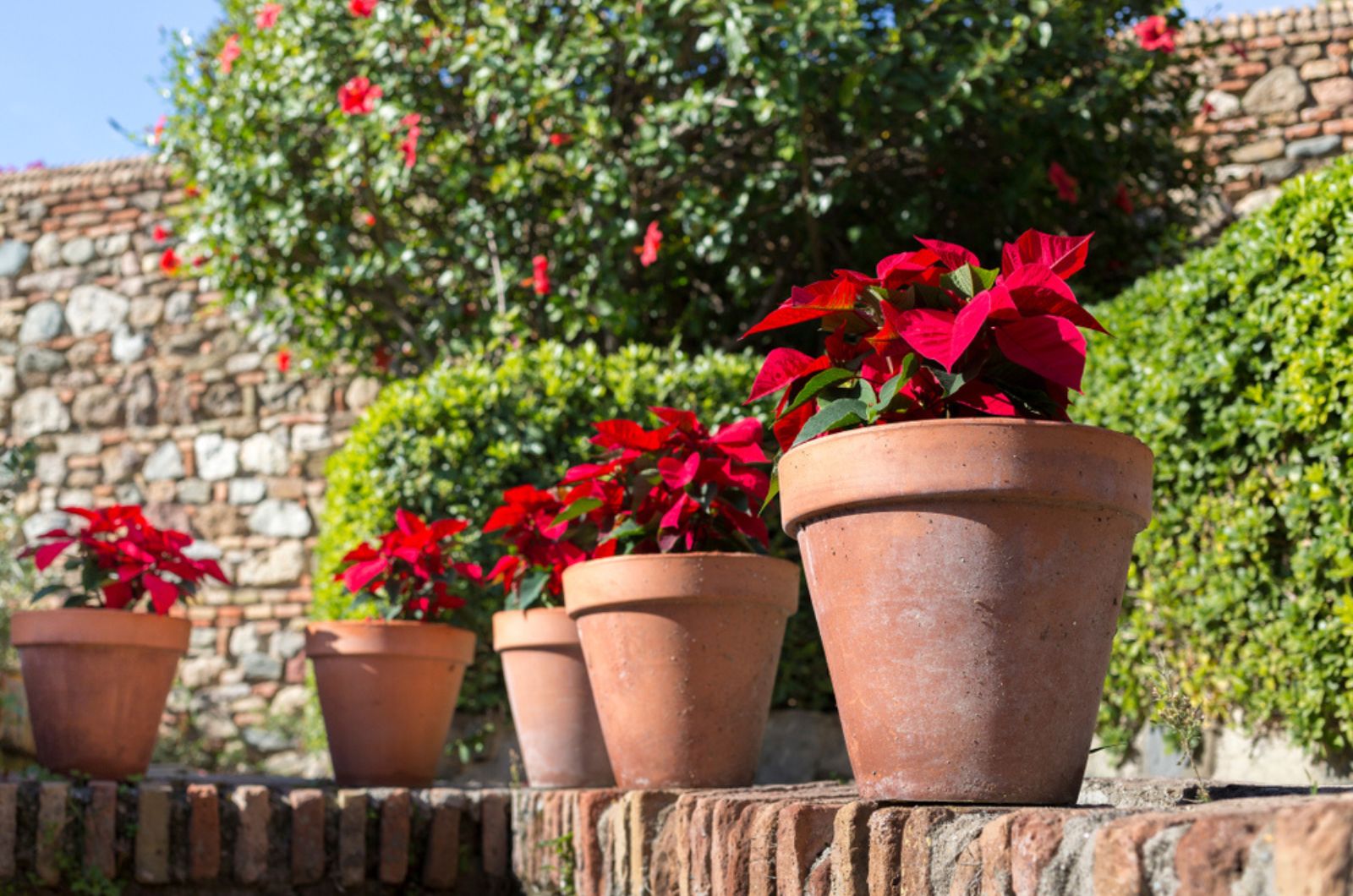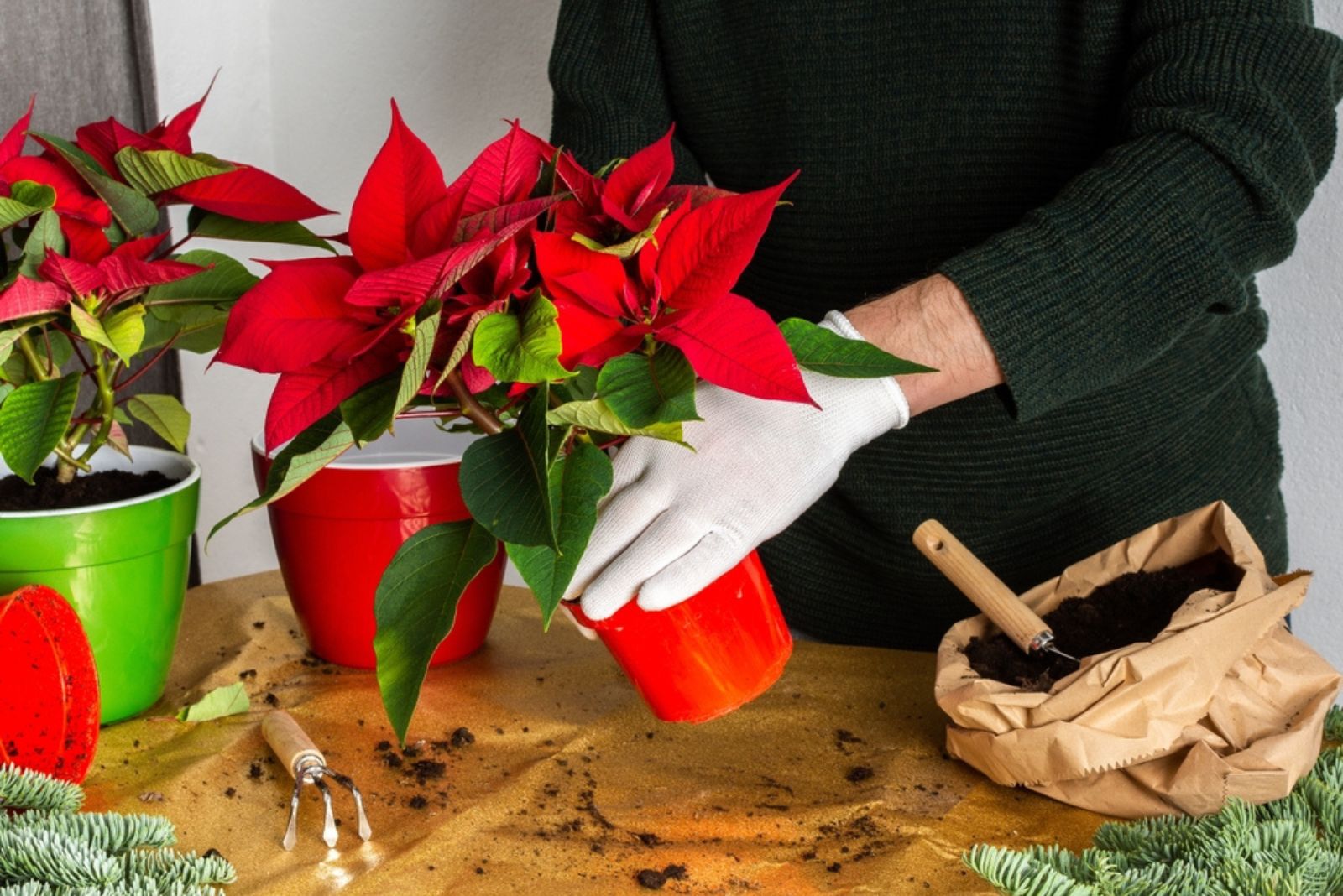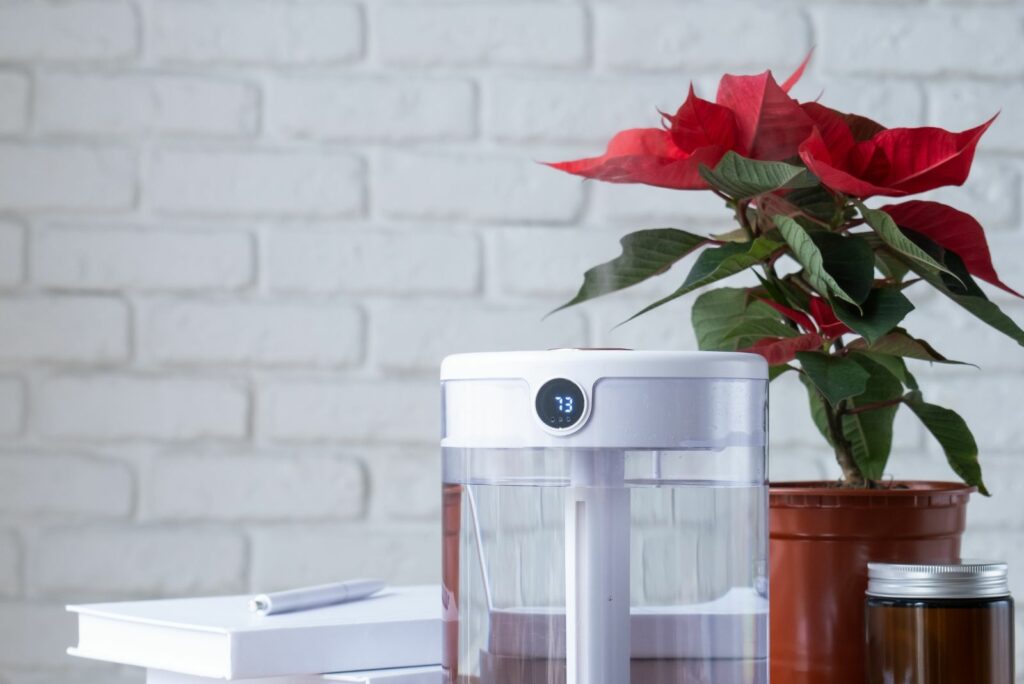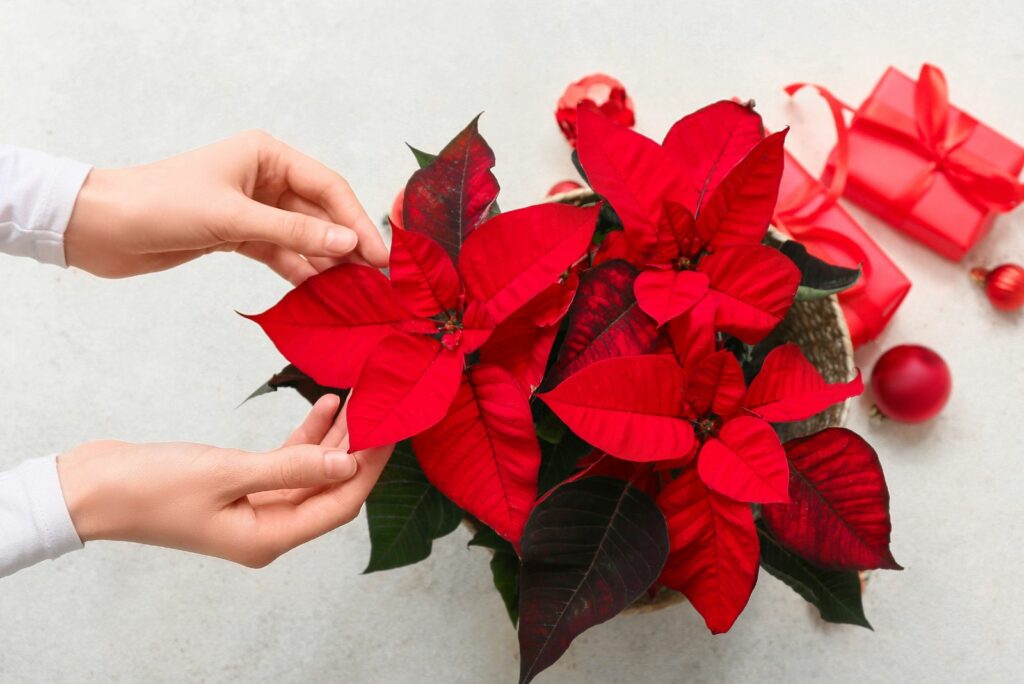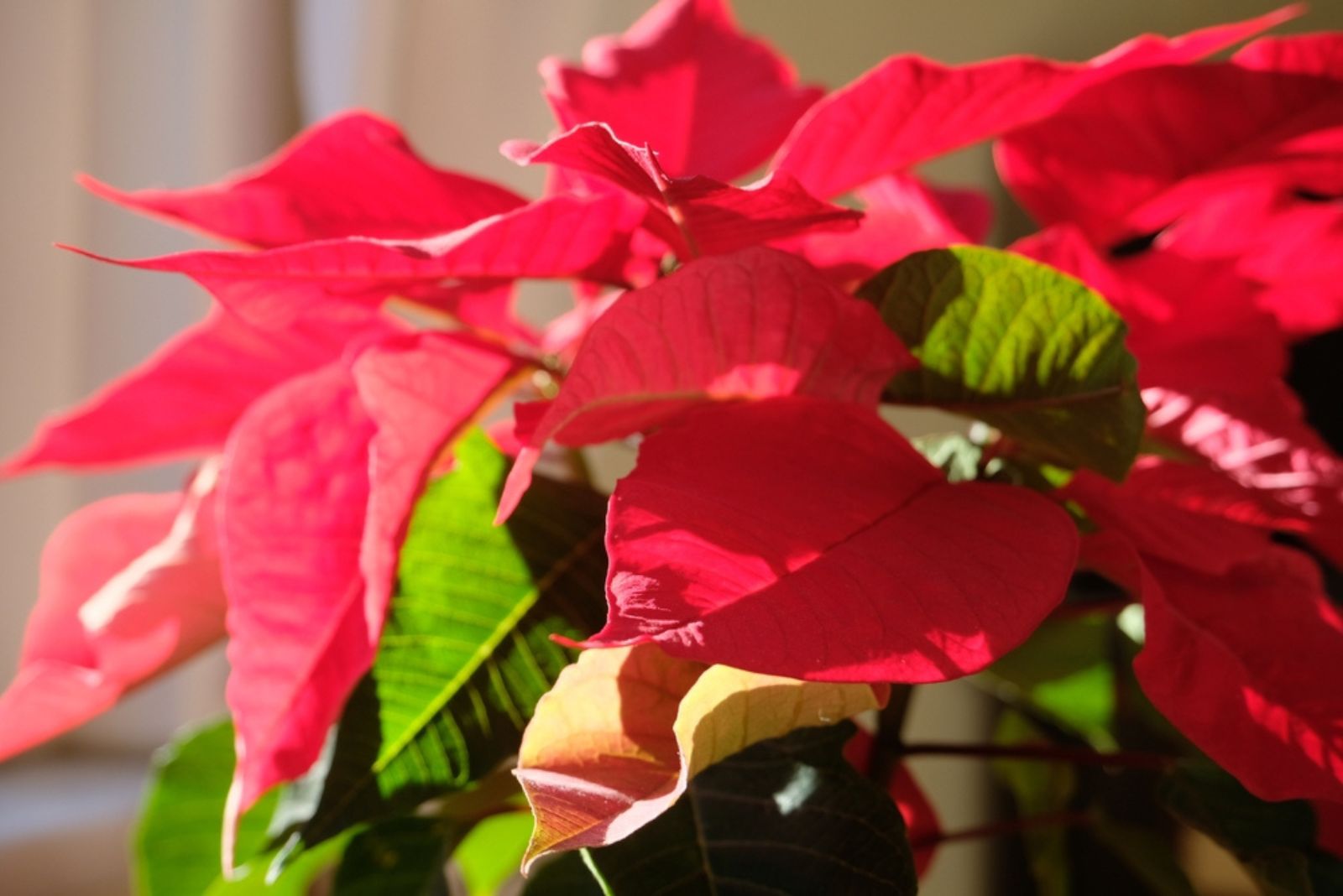I can’t imagine the Christmas season and decorations without Poinsettia plants. Many people buy blooming Poinsettias when they arrive in nursery centers and then discard them when the festive season ends.
But what if I told you that you can make a Poinsettia flower again? This means you won’t need to buy them the next season and you’ll have a wonderful display for months.
In this article, I’ll show you a few easy steps that will encourage reblooming in these plants and give you some tips for happy and healthy Poinsettias!
Let’s get started!
More About Poinsettia Blooms
There are a few things most people don’t know about Poinsettia flowers. The flowers are actually small and located in the center of the ‘petals’. Botanically speaking, these aren’t the true petals but rather bracts or modified plant leaves.
The red flowers of Poinsettias are the most popular but these plants come in other colors, such as creamy pink or pink. Some varieties generate petals that come in two colors, such as red and white, green and white, or light orange.
Poinsettias are referred to as ‘short-day’ plants, which means they start blooming when the days become shorter. With the proper care and the tips I’ll show you below, you’ll encourage your Poinsettias to rebloom next Christmas.
Step #1: Prune Your Poinsettia
The first thing you need to do is prune these plants after the flowering season.
You’ll know the time for pruning has come when the bracts start to shrivel and eventually fall off. This typically happens in January.
Your goal is to cut down the stems to approximately 6 inches above the soil line.
Don’t remove all the leaves; 2-3 leaves on each stem will encourage your Poinsettia to generate new growth.
Another benefit of pruning is keeping this Christmas plant looking tidy.
Step #2: Fertilize Twice A Month
After you prune the plant and it displays new growth, you should give it some additional nutrients.
The easiest way to do this is by feeding your Poinsettia. You can use an all-purpose houseplant fertilizer and make sure to prepare it according to the instructions on the label.
You’ll get the best results if you feed the plant every two weeks.
Watering is another essential factor in Poinsettia care, so make sure you irrigate when the top two inches of the growing medium dry out.
Poinsettias like to stay evenly moist but not waterlogged. It’s important to check the soil regularly to ensure it’s not too dry, as the plant can suffer if it dries out completely.
If you tend to forget about your plants, setting a reminder to water can help you stay on track. A simple trick is to pick up the pot – if it feels light, it’s time to give your Poinsettia a drink. It’s like checking in on a friend; the more you do it, the better you get at knowing when it’s thirsty!
Step #3: Keep The Plant Outdoors During The Summer
These plants are mainly grown as houseplants but if you live in warmer climates and you want to encourage reblooming, you should keep your Poinsettias outdoors during the summer.
If you live in USDA hardiness zones 9 through 11, these plants will thrive outdoors.
Don’t plant your Poinsettias in your outdoor garden until all the danger of frost has passed. Late May is typically reserved for replanting in many regions.
The first step is to remove your Poinsettia from its original container. Pay attention to the location you select for replanting; you should ensure a spot that receives bright morning sun and some shade during the hot summer afternoons.
Once outside, make sure the plant gets plenty of natural light and a consistent watering schedule. This will give it the energy it needs to set the stage for blooming once the cooler months arrive!
Step #4: Repot In Fall
Since the plant isn’t tolerant to low temperatures, you need to take it indoors when the fall arrives. Don’t wait until the nighttime temperatures go lower than 40 degrees Fahrenheit.
Your Poinsettias will grow pretty large over the summer, so you’ll most likely need to select a larger container.
These plants need good drainage, so opt for a loose and quick-draining potting soil amended with peat moss. Never allow the Poinsettia roots to sit in water because it will lead to root rot.
When choosing the container for your Poinsettia, make sure it has drainage holes in the bottom.
This lets excess water escape and keeps the roots from becoming waterlogged, which can really harm your plant.
Remember, good drainage is key to keeping your Poinsettia happy, healthy, and thriving all year long!
Step #5: Take The Plant Indoors
Here comes the most important part of the Poinsettia reblooming guide. As mentioned, these are ‘short day’ plants and if you want them to generate flowers, you need to keep them in darker conditions.
You need to find a room in your house where your plants can receive about 10 hours of bright light and approximately 14 hours of complete darkness.
This period of full darkness should not be interrupted because even a slight change in conditions may affect flower production. Believe it or not, any kind of light, including streetlights and light from the TV, can have an adverse effect on blooming.
If there isn’t such a room in your home, you can put your Poinsettia in a cardboard box and keep it closed for 14 hours.
Once your Poinsettia has had its 6-8 weeks of darkness, you can move it to a brighter spot to kickstart the blooming process.
This step is essential for encouraging the appearance of colorful bracts. Just keep the light and dark cycle consistent, and with a little patience, your plant will reward you with those beautiful blooms.
Keep in mind that Poinsettias thrive on routine, so sticking to the light and dark schedule as closely as possible will help ensure a successful rebloom. With the right care, your Poinsettia can bring vibrant color to your home for the holidays!
Step #6: Create The Perfect Humidity For Poinsettias
Humidity is a game-changer when it comes to getting your poinsettia to bloom again. These plants love moist air, so when the humidity drops, they can have trouble flowering.
But don’t worry – it’s easy to fix. All you need to do is create a comfortable, humid environment for your plant, and it’ll thank you with beautiful blooms.
To do this, you can place a shallow dish of water near the plant or invest in a humidifier. Both options will help raise the humidity to the ideal range of 50-60%. This makes all the difference, helping your poinsettia bloom and thrive.
Just be sure to keep the humidity levels consistent. Sudden changes in temperature or too much dry air can stress the plant, making it harder to bloom. But with the right humidity, your poinsettia will be the stunning centerpiece it was meant to be.
Step #7: Prevent Pests And Diseases
Pests and diseases can quickly turn a beautiful poinsettia into a sad sight, but don’t worry – most of these issues can be avoided with just a little care! By keeping an eye on your plant and giving it the attention it needs, you’ll keep it healthy and pest-free all season.
Start by checking your poinsettia for any signs of trouble. Look for tiny bugs, yellowing leaves, or wilting, as these could be signs that something’s wrong.
If you notice anything unusual, take action right away with an organic pesticide or a gentle solution like neem oil. Don’t forget to clean up any fallen leaves around the base, as they can attract pests.
It’s also a good idea to keep your poinsettia separate from your other plants, especially if it’s just been moved indoors. This extra step can help stop pests or diseases from spreading to the rest of your plants!
Step #8: Tips For Keeping Poinsettias Happy And Healthy
It typically takes two months for Poinsettias to generate new bracts in the conditions described above.
If you notice the flower color isn’t the same as the previous year, don’t panic. Many Poinsettias are dyed and then put on the market. There isn’t such a thing as purple with glitter in nature!
As soon as you notice new bracts, put your Poinsettias in the desired spot. Cut back on feeding and fertilization during the colder months.
Here’s a video on how to maintain Poinsettias year-round!
That’s it! Follow our guidelines and you’ll have thriving Poinsettias that will reward you with their splendid flowers next Christmas!

